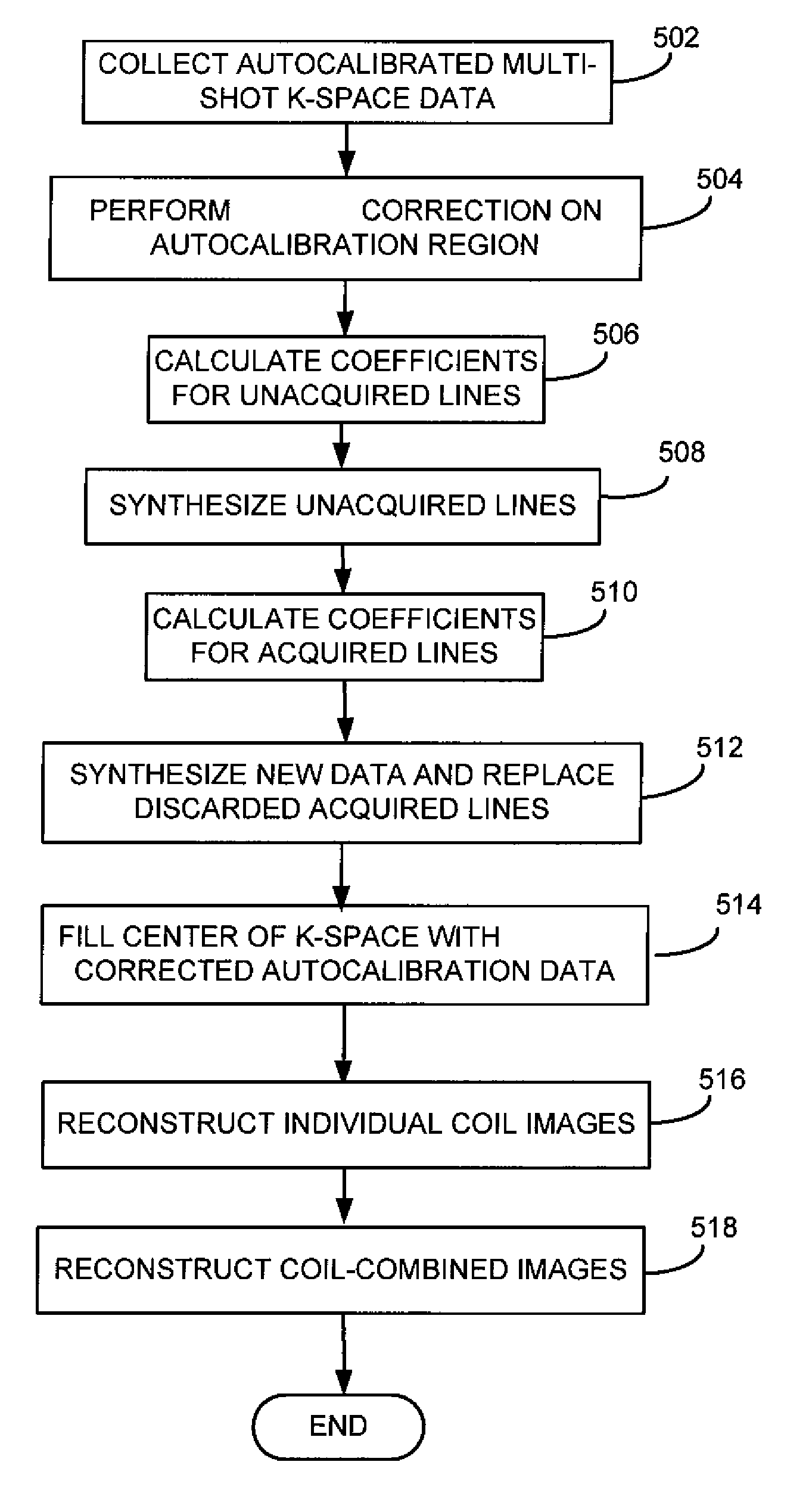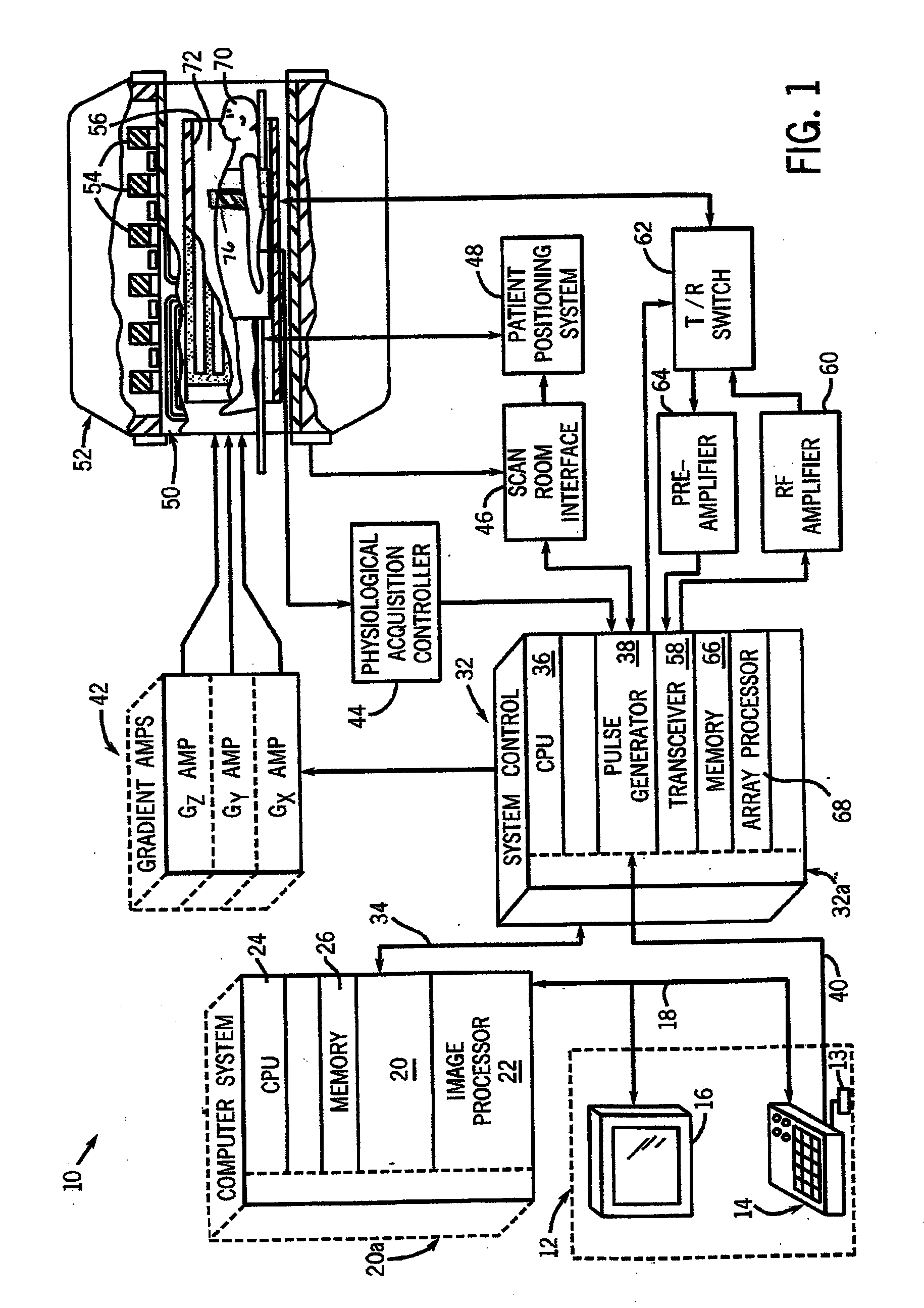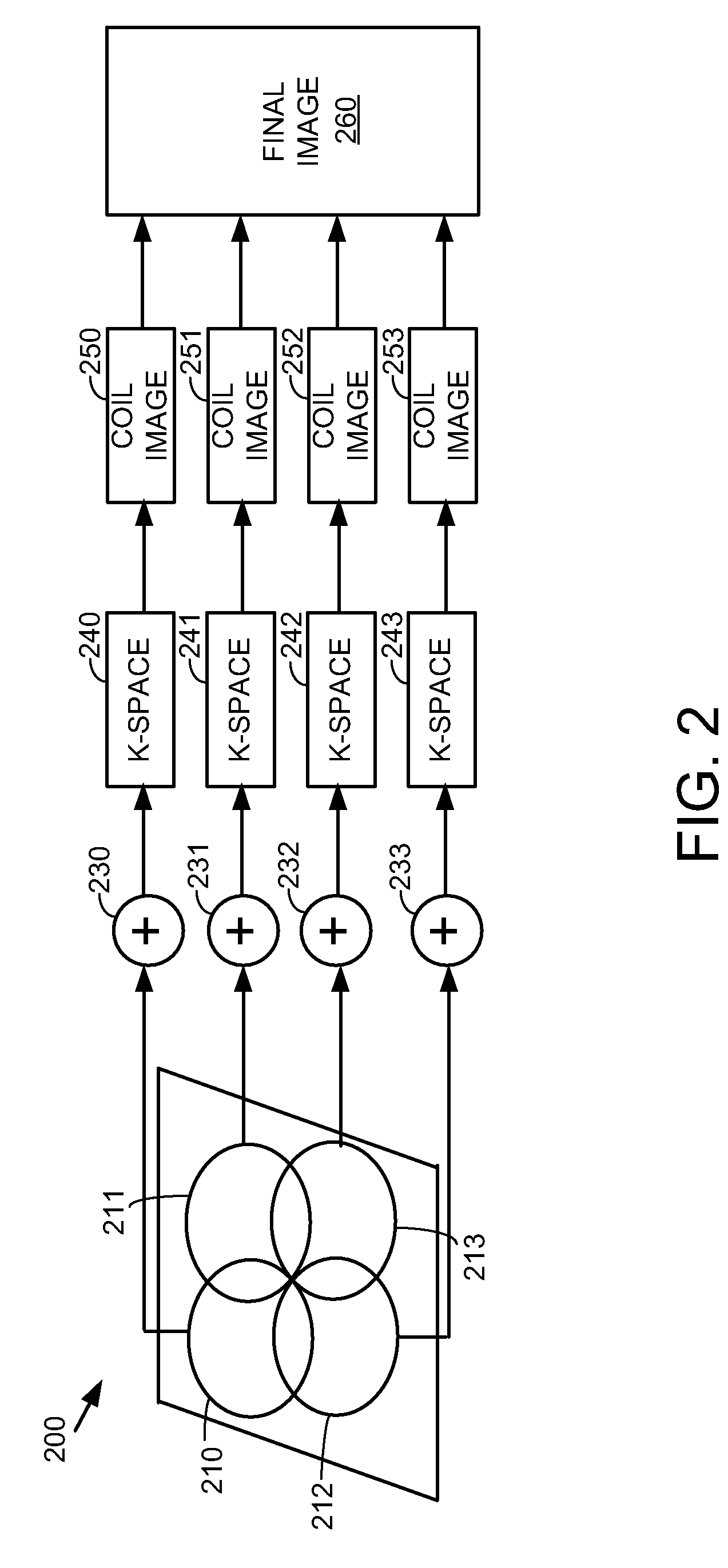Method and apparatus for k-space and hybrid-space based image reconstruction for parallel imaging and artifact correction
a parallel imaging and hybrid space technology, applied in the field of mri systems, can solve the problems of high water diffusion tissue, increased signal loss, and limited resolution of single-shot acquisitions, and is sensitive to susceptibility-induced image distortion
- Summary
- Abstract
- Description
- Claims
- Application Information
AI Technical Summary
Problems solved by technology
Method used
Image
Examples
Embodiment Construction
[0020]In the following detailed description, numerous specific details are set forth in order to provide a thorough understanding of embodiments. However it will be understood by those of ordinary skill in the art that the embodiments may be practiced without these specific details. In other instances, well-known methods, procedures, components and circuits have not been described in detail so as not to obscure the embodiments.
[0021]A correction method for correcting phase errors and / or magnitude errors may be applied to a multi-shot acquisition that is combined with autocalibrated parallel imaging (API) techniques. Each shot includes an autocalibration region with fully sampled k-space data. Correction methods known in the art may be applied to the k-space data in the autocalibration region for each individual shot to generate corrected k-space data. The corrected k-space data from one or more of these shots is used to create a corrected reference autocalibration region. Outside th...
PUM
 Login to View More
Login to View More Abstract
Description
Claims
Application Information
 Login to View More
Login to View More - R&D
- Intellectual Property
- Life Sciences
- Materials
- Tech Scout
- Unparalleled Data Quality
- Higher Quality Content
- 60% Fewer Hallucinations
Browse by: Latest US Patents, China's latest patents, Technical Efficacy Thesaurus, Application Domain, Technology Topic, Popular Technical Reports.
© 2025 PatSnap. All rights reserved.Legal|Privacy policy|Modern Slavery Act Transparency Statement|Sitemap|About US| Contact US: help@patsnap.com



